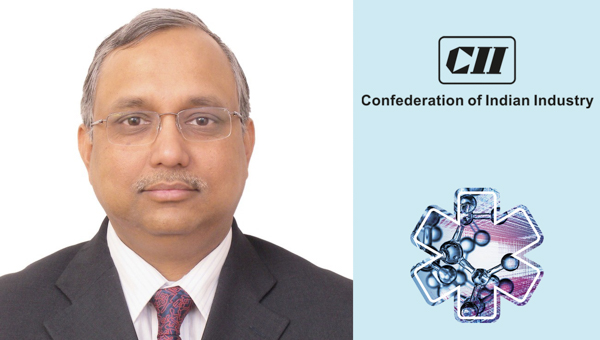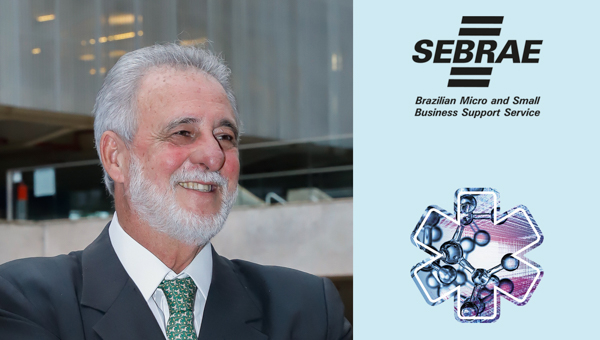Global Innovation Index 2019: India Makes Major Gains as Switzerland, Sweden, U.S., Netherlands, U.K. Top Ranking; Trade Protectionism Poses Risks for Future Innovation
New Delhi,
July 24, 2019
PR/2019/834
Released jointly by WIPO, Cornell University, INSEAD and the 2019 GII Knowledge Partners, the Confederation of Indian Industry, Dassault Systèmes - the 3DEXPERIENCE Company - and the National Confederation of Industry (CNI) – Brazil and Brazilian Micro and Small Business Support Service (Sebrae)
Switzerland is the world’s most-innovative country followed by Sweden, the United States of America (U.S.), the Netherlands and the United Kingdom (U.K.), according to the 2019 edition of the Global Innovation Index (GII), which also identifies regional leaders India, South Africa, Chile, Israel and Singapore, with China, Viet Nam and Rwanda topping their income groups.
Resources for journalists
Video B-roll: WIPO Director Francis Gurry comments
on various aspects of the GII 2019 | Social media kit
Now in its 12th edition, the GII is a global benchmark that helps policy makers better understand how to stimulate and measure innovative activity, a main driver of economic and social development. The GII 2019 ranks 129 economies (Annex 1 ) based on 80 indicators, from traditional measurements like research and development investments and international patent and trademark applications to newer indicators including mobile-phone app creation and high-tech exports.
The GII 2019 also looks at the economic context: Despite signs of slowing economic growth, innovation continues to blossom, particularly in Asia, but pressures are looming from trade disruptions and protectionism. Sound government planning for innovation is critical for success, the report shows.
“The GII shows us that countries that prioritize innovation in their policies have seen significant increases in their rankings,” said WIPO Director General Francis Gurry. “The rise in the GII by economic powerhouses like China and India have transformed the geography of innovation and this reflects deliberate policy action to promote innovation,” said WIPO Director General Francis Gurry.
Top 20 in global ranking
- Switzerland (Number 1 in 2018)
- Sweden (3)
- United States of America (6)
- The Netherlands (2)
- United Kingdom (4)
- Finland (7)
- Denmark (8)
- Singapore (5)
- Germany (9)
- Israel (11)
- Korea, Republic of (12)
- Ireland (10)
- Hong Kong (China) (14)
- China (17)
- Japan (13)
- France (16)
- Canada (18)
- Luxemburg (15)
- Norway (19)
- Iceland (23)
For the first time, the GII launch is being hosted by the Government of India, which uses the GII in creative ways to strengthen its policy framework for innovation at both the national and regional levels.
“The 2019 launch of the Global Innovation Index in India is a significant event and a recognition of the Government of India’s commitment to innovation in recent years,” said Minister of Commerce and Industry & Railways Piyush Goyal. He added: “The GII is a useful tool for governments to map out their strategies to foster innovation. The Government of India compliments the World Intellectual Property Organization for its efforts in this direction.”
Mr. Gurry thanked the Government of India for hosting the global launch of the GII. “India’s high-level focus on using innovation to foster economic development makes the country an ideal location for the GII 2019 launch,” Mr. Gurry said.
GII 2019 key findings
Among notable GII key findings (Annex 2) this year:
- The global landscape of science, innovation, and technology has undergone important shifts over the last decades. Middle-income economies, especially in Asia, are increasingly contributing to global research and development (R&D) and international patenting rates via WIPO’s International Patent System;
- The GII 2019 shows that public R&D expenditures – particularly in some high-income economies – are growing slowly or not at all. This raises concerns given the public sector’s central role in funding basic R&D and blue-sky research, which are key to future innovations;
- Increased protectionism poses risks. If left uncontained, it will lead to a slowdown of growth in innovation productivity and diffusion across the globe;
- Innovation inputs and outputs are still concentrated in very few economies. Divides also persist in how effectively economies obtain return on their innovation investments. Some economies achieve more with less;
- Most top science and technology clusters are in the U.S., China, and Germany, whlie Brazil, India, Iran, the Russian Federation, and Turkey also feature in the top 100 list. The top five clusters: Tokyo-Yokohama (Japan); Shenzhen-Hong Kong, China (China); Seoul (Republic of Korea); Beijing (China); San Jose-San Francisco (U.S.).
“While the Global Innovation Index ranks economies according to their innovation capacity and performance, it also provides valuable insights into the dynamics of global innovation: It highlights economies that excel in innovation and those that are more successful in translating investments in innovation inputs into innovation outputs. Lessons from these innovation leaders provide useful guidance on innovation policy for others,” said Soumitra Dutta, Former Dean and Professor of Management at Cornell University, a GII co-publisher.
GII 2019 knowledge partners on the importance of innovation
GII 2019 theme: “Creating Healthy Lives – The Future of Medical Innovation”
The GII 2019 theme is “Creating Healthy Lives – The Future of Medical Innovation.” Through a healthcare theme section and 16 chapters from notable contributors, the GII 2019 looks at how medical innovation, including the use of artificial intelligence (AI), genomics, and mobile-phone based health applications, will transform the delivery of healthcare.
“Innovation in the field of health is now being increasingly driven by data (Internet of Things) and artificial intelligence, in both diagnosis and prognosis. Unprecedented challenges need urgent attention in ethical, social and economic dimensions. As the power of medical decisions moves farther away from medical professions, regulators, governments, business and civil society need to establish limits to the ways in which the holders of big data and advanced algorithms can make or influence health decisions. In the absence of swift action, innovation in health and medicine may become a significant source of inequality," said Bruno Lanvin, INSEAD Executive Director for Global Indices.
GII 2019 regional innovation leaders
| Region / rank | Country | GII 2019 global rank |
|---|---|---|
| Northern America | ||
| 1 | United States of America | 3 |
| 2 | Canada | 17 |
| Sub-Saharan Africa | ||
| 1 | South Africa | 63 |
| 2 | Kenya | 77 |
| 3 | Mauritius | 82 |
| Latin America and the Caribbean | ||
| 1 | Chile | 51 |
| 2 | Costa Rica | 55 |
| 3 | Mexico | 56 |
| Central and Southern Asia | ||
| 1 | India | 52 |
| 2 | Iran, Islamic Republic of | 61 |
| 3 | Kazakhstan | 79 |
| Northern Africa and Western Asia | ||
| 1 | Israel | 10 |
| 2 | Cyprus | 28 |
| 3 | United Arab Emirates | 36 |
| South East Asia, East Asia, and Oceania | ||
| 1 | Singapore | 8 |
| 2 | Republic of Korea | 11 |
| 3 | Hong Kong, China | 13 |
| Europe | ||
| 1 | Switzerland | 1 |
| 2 | Sweden | 2 |
| 3 | The Netherlands | 4 |
Northern America
-
The U.S. reaches the GII top three thanks to better performance and improved GII data coverage. The U.S. maintains its status as global leader in the quality of credit and investment markets and boasts R&D-intensive global companies, as well as top-quality scientific publications and universities. It ranks first worldwide in the quality of innovation. The U.S. is also home to the greatest number of top 100 science and technology clusters in the world, with a total of 26.
-
Canada moves up to the 17th position, also thanks to a more-precise assessment of its human capital and research system. High scores in quality of universities and scientific publications make Canada the 10th global economy in the quality of innovation.
Sub-Saharan Africa
Since 2012, Sub-Saharan Africa has had more economies outperforming relatively well on innovation compared to their level of economic development than any other region. This year these include Kenya, South Africa, Rwanda, and Mozambique.
South Africa (63) takes the top spot among all economies in the region, followed by Kenya (77) and Mauritius (82).
- South Africa benefits from a relatively sophisticated credit and investment market, as evidenced by indicators such as domestic credit to the private sector and market capitalization. Other strong indicators include IP payments and quality of publications.
- This year Rwanda makes significant progress and ranks 94th, up five from 2018. It is the top economy in the low-income group and shows a strong performance in capital formation, ease of getting credit, firms offering formal training, and high-technology imports.
Latin America and the Caribbean
Progress in innovation performance remains slow in Latin America and the Caribbean and the GII shows that the region’s innovation potential remains largely untapped despite incremental improvements and encouraging initiatives.
The top three economies in this region are Chile (51), followed by Costa Rica (55), and Mexico (56).
- Chile maintains its rank in institutional variables and registers improvements in education-related variables, with improved performance found in patents, utility models, and mobile-app creation.
- Thanks to its role in global trade, Mexico remains strong in trade-related variables such as high-tech imports and exports and creative goods exports.
- Brazil, the region’s largest economy, is ranked 66th globally this year. Areas of comparative strengths include important variables such as R&D expenditures and R&D-intensive global firms, and quality of scientific publications and universities. It is also the only country in the region hosting science and technology clusters in the top 100 worldwide.
Central and Southern Asia
-
India maintains its top place in the Central and Southern Asia region as the 52nd ranked economy this year. From 81 in 2015, India’s 29-place move up the GII represents the biggest jump by any major economy. Thanks to its high-quality scientific publications and universities, India remains 2nd among middle-income economies in the quality of innovation. It maintains top ranks in a number of important indicators such as productivity growth and exports of services related to information and communication technologies. This year India reaches the 15th spot in global companies’ R&D expenditures. It also features in the GII ranking on the world’s top science and technology clusters, with Bengaluru, Mumbai and New Delhi included in the global top 100 clusters.
-
The Islamic Republic of Iran is the second most innovative country in the region and the 3rd economy worldwide in science and engineering graduates as a proportion of the total population. It confirms its relatively strong performance in variables such as capital formation, patent applications, scientific and technical publications, productivity growth, high-technology manufactures, trademarks and industrial designs.
Northern Africa and Western Asia
Israel (10), Cyprus (28), and the United Arab Emirates (36) are the top three economies in this region.
- Thanks to its innovative business sector and eminent research and development system, Israel produces high-quality innovation outcomes, including exports of services related to information and communication technologies and mobile applications.
- The United Arab Emirates is in the top 10 in the number of incoming tertiary students, R&D expenditures financed by the business sector, research talent in business enterprises, as well as cost of redundancy dismissal, electricity output, and state of cluster development.
South East Asia, East Asia, and Oceania
Singapore (8), the Republic of Korea (11), and Hong Kong, China (13) are the three top-ranked economies in the South East Asia, East Asia, and Oceania region. China is number 14 following a rapid rise up the ranks of the GII in recent years.
- China continues its upward rise in the GII and firmly establishes itself as a world innovation leader. It maintains its first place in quality of innovation among middle-income economies for the seventh consecutive year and achieves top ranks in patents, industrial designs and trademarks by origin, as well as high-technology and creative goods exports. With 18 of the top 100 science and technology clusters, China is second only to the U.S. in this measurement.
- Partly due to improved data coverage, Singapore moves to the 8th spot this year. It maintains leadership in institution-related indicators, while becoming world leader in, knowledge-intensive employment, and strategic alliances deals.
- The Republic of Korea gains one position from last year, moving closer to the top 10. It becomes world leader in human capital and research, maintaining high ranks in most R&D-related indicators, as well as tertiary enrolment and number of researchers. Republic of Korea keeps its first spot in the world in national patent applications, industrial designs, and high-technology exports, relative to gross domestic product (GDP).
- Viet Nam (42, up three from GII 2018) and the Philippines (54, up 19 from GII 2018) make important progress this year. While some changes to the GII model explain some of the Philippines’ leap, newly available metrics give a more-thorough assessment of its innovative performance, which itself shows signs of progress. Both economies improve in most of the GII areas and gain top ranks in high-technology imports and exports.
Europe
Twelve of the top 20 GII economies are in Europe.
- Switzerland tops the GII for the ninth consecutive year. Its solid strong performance translates to excellent innovation outcomes including patent applications, IP receipts and high-tech manufacturing products.
- Sweden is the second ranked economy worldwide in the GII 2019, thanks to its developed infrastructure, an innovative business sector and outputs from knowledge and technology. The country makes important improvements in innovation outcomes and maintains a top position in patent applications filed via WIPO’s Patent Cooperation Treaty (PCT), relative to gross domestic product.
About the Global Innovation Index
The Global Innovation Index 2019 (GII), in its 12th edition this year, is co-published by Cornell University, INSEAD, and the World Intellectual Property Organization (WIPO, a specialized agency of the United Nations).
Published annually since 2007, the GII is now a leading benchmarking tool for business executives, policy makers and others seeking insight into the state of innovation around the world. The study draws on the expertise of its Knowledge Partners: the Confederation of Indian Industry (CII), Dassault Systèmes – The 3DEXPERIENCE Company, and the National Confederation of Industry (CNI) and Serviço Brasileiro de Apoio às Micro e Pequenas Empresas (SEBRAE), as well as an Advisory Board of eminent international experts.
The core of the GII Report consists of a ranking of world economies’ innovation capabilities and results. Recognizing the key role of innovation as a driver of economic growth and prosperity, and the need for a broad vision of innovation applicable to developed and emerging economies, the GII includes indicators that go beyond the traditional measures of innovation, such as the level of research and development.
The GII is concerned primarily with improving the journey towards a better way to measure and understand innovation and with identifying targeted policies and good practices that foster innovation. The GII creates an environment in which innovation factors are under continual evaluation, including the following features:
- 129 country/economy profiles, including data, ranks, and strengths and weaknesses
- 80 data tables for indicators from over 30 international public and private sources, of which 57 are hard data, 18 composite indicators, and 5 survey questions
- A transparent and replicable computation methodology including 90% confidence intervals for each index ranking (GII, output and input sub-indices) and an analysis of factors affecting year-on-year changes in rankings
The GII 2019 is calculated as the average of two sub-indices. The Innovation Input Sub-Index gauges elements of the national economy which embody innovative activities grouped in five pillars: (1) Institutions, (2) Human capital and research, (3) Infrastructure, (4) Market sophistication, and (5) Business sophistication. The Innovation Output Sub-Index captures actual evidence of innovation results, divided in two pillars: (6) Knowledge and technology outputs and (7) Creative outputs.
For the ninth consecutive year, the Joint Research Centre (JRC) of the European Commission audited the GII calculations.
Knowledge partners
The Confederation of Indian Industry, Dassault Systèmes – The 3DEXPERIENCE Company, and the National Confederation of Industry (CNI) and Brazilian Micro and Small Business Support Service (Sebrae) collaborate as Knowledge Partners in 2019.
Knowledge Partners believe in the role of innovation in increasing the competitiveness of nations, enabling economic growth, driving societal changes and building the foundation of a country’s future.
They are committed to producing a valuable and non-partisan resource. Knowledge Partners support the elaboration of the GII; contribute analytical chapters or case studies to the GII Report; and participate in the discussion and dissemination of the GII results.
About CII
The Confederation of Indian Industry (CII) works to create and sustain an environment conducive to the development of India, partnering industry, Government, and civil society, through advisory and consultative processes. CII is a non-government, not-for-profit, industry-led and industry-managed organization, playing a proactive role in India's development process. Founded in 1895, India's premier business association has around 9,000 members, from the private as well as public sectors, including SMEs and MNCs, and an indirect membership of over 300,000 enterprises from around 265 national and regional sectoral industry bodies.
About Dassault Systèmes – The 3DEXPERIENCE Company
Dassault Systèmes, the 3DEXPERIENCE Company, provides business and people with virtual universes to imagine sustainable innovations. Its world-leading solutions transform the way products are designed, produced, and supported. Dassault Systèmes’ collaborative solutions foster social innovation, expanding possibilities for the virtual world to improve the real world. The group brings value to over 250,000 customers of all sizes, in all industries, in more than 140 countries.
About CNI-Sebrae
The National Confederation of Industry (Confederação Nacional da Indústria – CNI) Brazil is the official and highest-level organization representing Brazilian industry. Since its founding in 1938, CNI has defended domestic business and manufacturing interests, acting as the main interlocutor with the executive, legislative, and judicial branches of government, as well as with various organizations and entities in Brazil and around the world. CNI represents Brazil’s 27 state-level federations of industries and 1,250 sectorial employer’s unions, to which almost 700,000 companies are affiliated with. In addition, it directly administers the following organizations: Social Service of Industry (Serviço Social da Indústria – SESI), the National Service of Industrial Training (Serviço Nacional de Aprendizagem Industrial – SENAI) and the Euvaldo Lodi Institute (Instituto Euvaldo Lodi – IEL).
Brazilian Micro and Small Business Support Service – Sebrae – is a non-profit private entity with the mission of promoting the sustainable and competitive development of small businesses. Through its experience Sebrae has become an expert in small business development in Brazil. Its role is to foster entrepreneurship, providing guidance to help small businesses to grow and generate more employment, helping to develop Brazilian economy. It has a network of almost 700 onsite service centers throughout the country, counting on more than 5,000 small business experts and a large pool of external consultants working towards transferring knowledge and know-how to those who own or intend to start a company.
Press contacts
WIPO
Samar Shamoon
samar.shamoon@wipo.int
+41 22 338 8161
Edward Harris
edward.harris@wipo.int
+41 22 338 7224
Cornell University
Sarah Magnus-Sharpe
sm2374@cornell.edu
+1 607 254 7109
INSEAD Europe
Chris Howells
chris.howells@insead.edu
+65 6799 5490
Aileen Huang
aileen.huang@insead.edu
+65 6799 5552
Cheryl Ng
cheryl.ng@insead.edu
+65 6799 5490
Ilan Goren
ilan.goren@insead.edu
+33 678042577
About Cornell University
Cornell University is a privately endowed research university and a partner of the State University of New York. As the federal land-grant institution in New York State, we have a responsibility - unique within the Ivy League - to make contributions in all fields of knowledge in a manner that prioritizes public engagement to help improve the quality of life in our state, the nation, the world. Cornell University has created a reimagined model for business education that reflects the future of business itself: flexible, collaborative, and cross-disciplinary. Cornell SC Johnson College of Business unites the strengths of three accredited business schools — the Charles H. Dyson School of Applied Economics and Management, the School of Hotel Administration, and the Samuel Curtis Johnson Graduate School of Management so that every student can benefit from the combined power of business at Cornell: more degrees, faculty, resources and expertise. Whether solving real-world challenges, or deeply immersing in a particular industry, Cornell SC Johnson College of Business offers something unique, meaningful and lasting.
About INSEAD, The Business School for the World
As one of the world's leading and largest graduate business schools, INSEAD brings together people, cultures and ideas to develop responsible leaders who transform business and society. Our research, teaching and partnerships reflect this global perspective and cultural diversity. With campuses in Europe (France), Asia (Singapore) and the Middle East (Abu Dhabi), INSEAD’s business education and research spans three continents. Our 155 renowned Faculty members from 40 countries inspire more than 1,300 degree participants annually in our MBA, Executive MBA, Specialised Master's degrees (Master in Finance, Executive Master in Change) and PhD programmes. In addition, more than 12,000 executives participate in INSEAD Executive Education programmes each year.INSEAD continues to conduct cutting-edge research and innovate across all our programmes. We provide business leaders with the knowledge and awareness to operate anywhere. These core values drive academic excellence and serve the global community as The Business School for the World.
About WIPO
The World Intellectual Property Organization (WIPO) is the United Nations agency that serves the world’s innovators and creators, ensuring that their ideas travel safely to the market and improve lives everywhere.
We do so by providing services that enable creators, innovators and entrepreneurs to protect and promote their intellectual property (IP) across borders and acting as a forum for addressing cutting-edge IP issues. Our IP data and information guide decisionmakers the world over. And our impact-driven projects and technical assistance ensure IP benefits everyone, everywhere.
For more information, please contact the News and Media Division at WIPO:- Tel: (+41 22) 338 81 61 / 338 72 24






